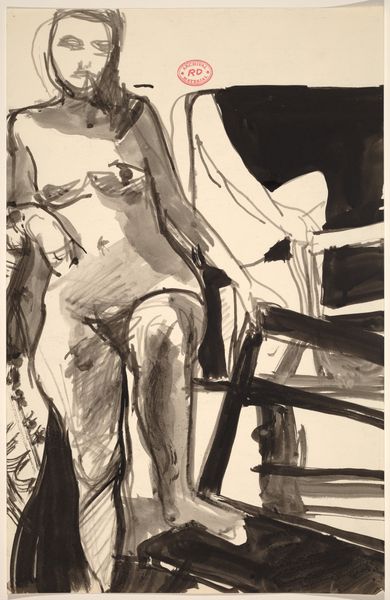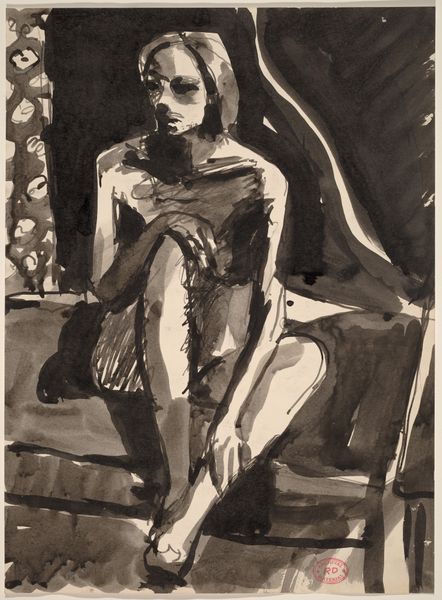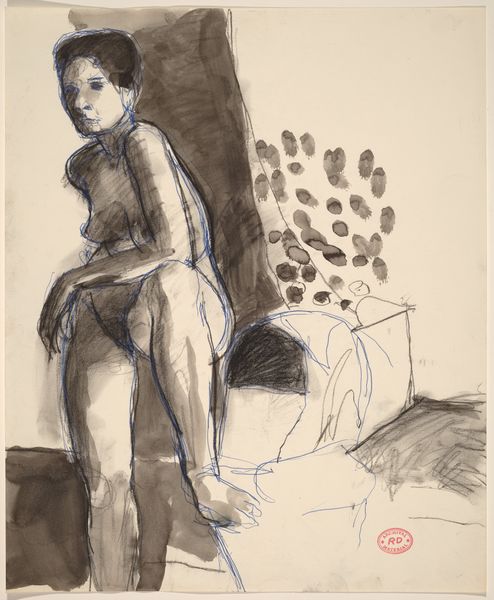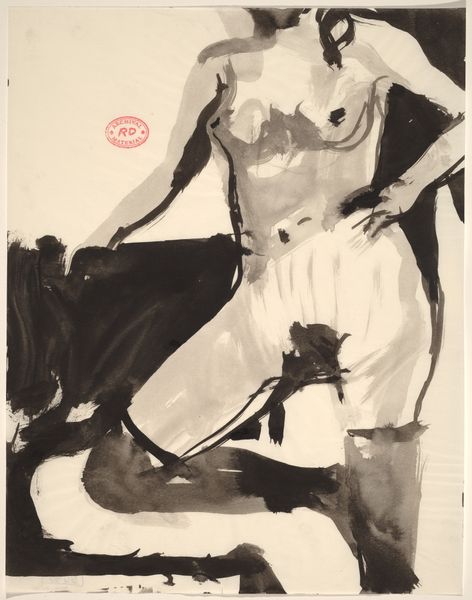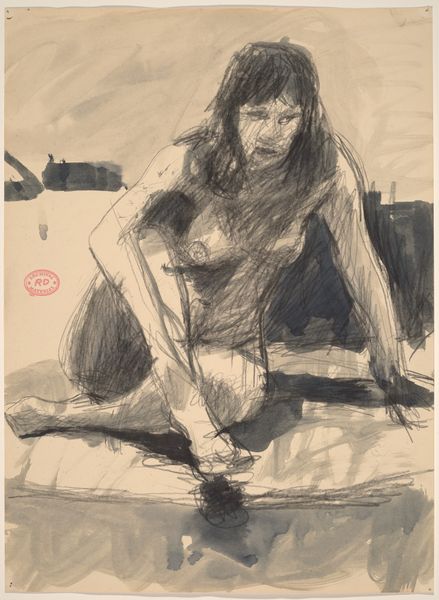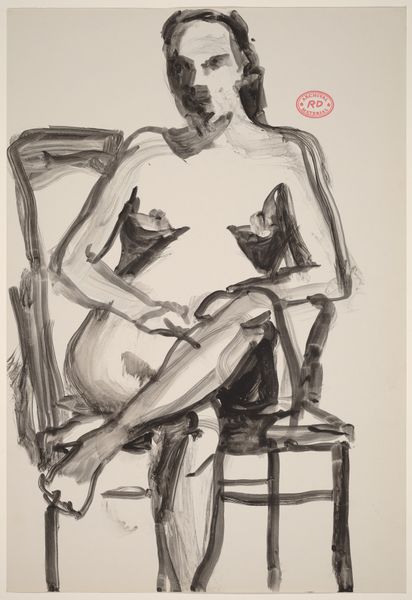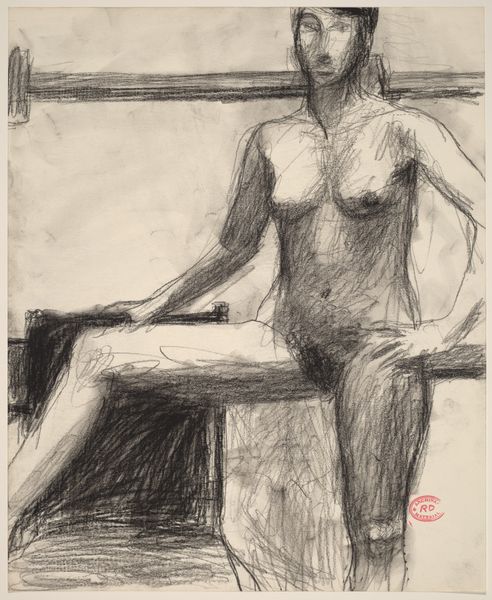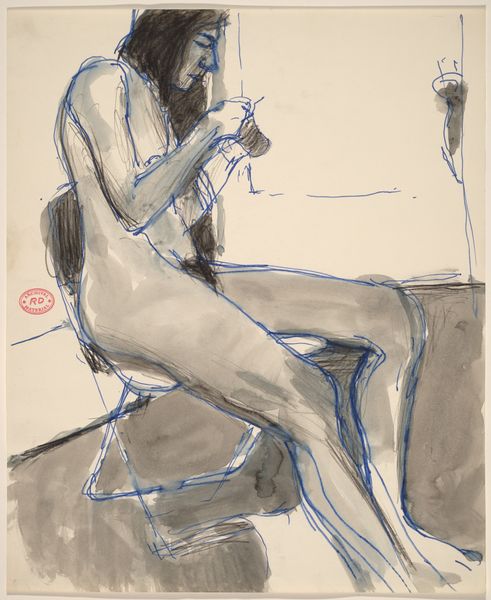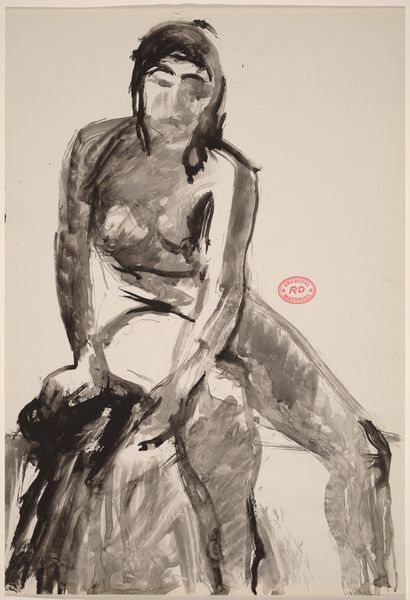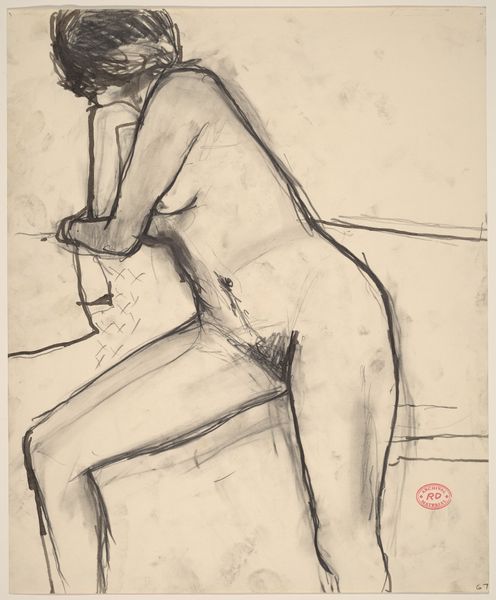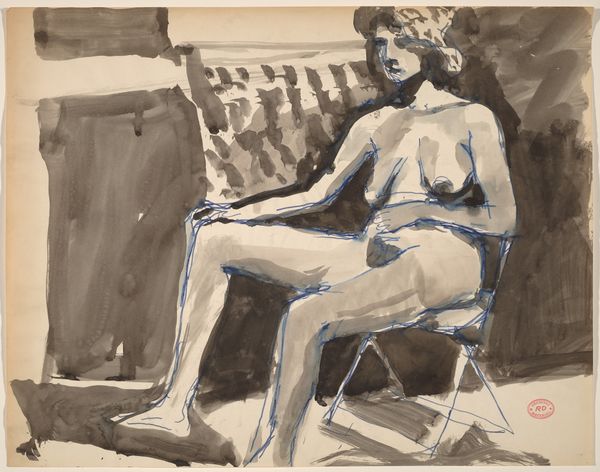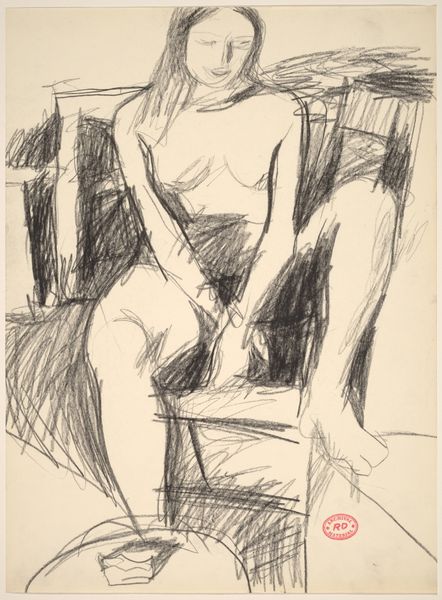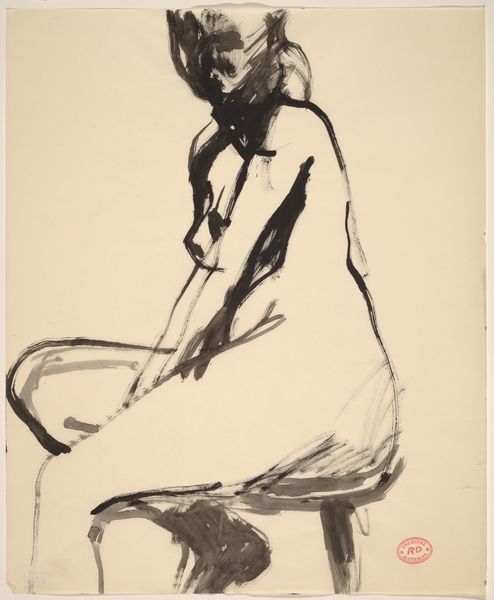![Untitled [seated female nude in a partially draped armchair] by Richard Diebenkorn](/_next/image?url=https%3A%2F%2Fd2w8kbdekdi1gv.cloudfront.net%2FeyJidWNrZXQiOiAiYXJ0ZXJhLWltYWdlcy1idWNrZXQiLCAia2V5IjogImFydHdvcmtzLzFmMjVmZTFiLTQwMzAtNGRjYy04YWYzLThhOTc2MDVmMzQzYS8xZjI1ZmUxYi00MDMwLTRkY2MtOGFmMy04YTk3NjA1ZjM0M2FfZnVsbC5qcGciLCAiZWRpdHMiOiB7InJlc2l6ZSI6IHsid2lkdGgiOiAxOTIwLCAiaGVpZ2h0IjogMTkyMCwgImZpdCI6ICJpbnNpZGUifX19&w=3840&q=75)
Untitled [seated female nude in a partially draped armchair] c. 1957
0:00
0:00
drawing, ink
#
portrait
#
abstract-expressionism
#
drawing
#
figuration
#
bay-area-figurative-movement
#
ink
#
portrait drawing
#
nude
Dimensions: overall: 42.6 x 35.2 cm (16 3/4 x 13 7/8 in.)
Copyright: National Gallery of Art: CC0 1.0
Curator: Looking at Richard Diebenkorn's "Untitled [seated female nude in a partially draped armchair]" from around 1957, it strikes me how starkly vulnerable yet powerful the figure feels, caught in these quick, fluid strokes of ink. What are your initial thoughts? Editor: I agree; there’s something intensely immediate and raw about it. It feels very exposed, doesn't it? The bold black ink, the unfinished quality… It’s not about idealizing the body. Curator: Not at all. Diebenkorn’s really pulling apart traditional notions of the nude, in a way that mirrors Abstract Expressionism’s rejection of representation. He's deconstructing the figure while still retaining a sense of her presence and her space. There is a subtle eroticism in there too, and a profound humanity in her languid posture. Editor: Yes, it is about presence, not perfection. Considering Diebenkorn's move into abstraction later, one wonders if these figurative works were almost a necessary processing of form. Do you think he found something limiting or too prescriptive in the classical approaches to figure drawing that he may have encountered in the art world at that time? Curator: I imagine he wrestled with those very constraints. To work within and then move beyond... Abstract Expressionism allowed him that freedom to investigate feeling and form in a more unrestricted way, even within what some might call the restrictive norms of that movement. Editor: It’s a very internal image, really, isn't it? More about the artist’s response to the subject than the subject herself. The gaze is almost totally avoided by the obscured facial features, adding to a strange intimacy. It does remind me that images, including those depicting figures, always carry with them the marks of their own historical moment. Curator: Indeed, and looking back, it’s a wonderful testament to how even fleeting ink sketches can hold such depth and invite such lasting reflection. It is difficult to imagine we will be considering such beautiful, simple forms such a long time from their original conception. Editor: So true! It’s images like this one that compel me to visit and revisit and re-evaluate the art that makes museums the rich social and political places that they are.
Comments
No comments
Be the first to comment and join the conversation on the ultimate creative platform.
